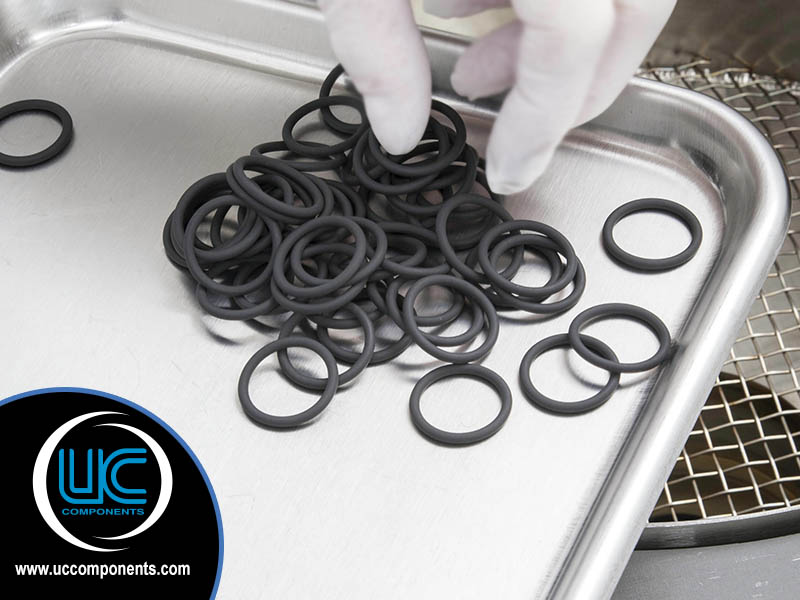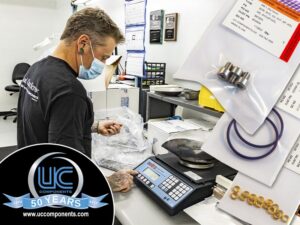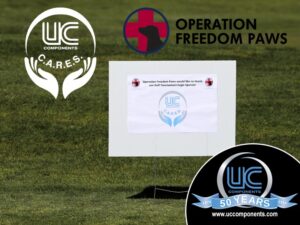O-ring technology has come a long way since it was first developed in the late 1800s. Selecting the proper O-ring design and material is essential to maintaining the seal and the overall system or application integrity. Though crucial, you cannot simply look at the size and material when selecting an O-ring for your application. What else needs to be taken into consideration? The application itself, temperatures, pressure, and load.
1.) Application
The application is important when determining dimensions, type of elastomer, and other critical specifications. O-rings have many potential static (such as a face seal) and dynamic (such as a radial or piston seal) configurations. You need to know the specific groove dimensions, assembly clearances, and manufacturing tolerances to properly incorporate an O-ring into the design.
2.) Size
There are over 400 standard AS568A inch measure O-ring sizes and a lot more in metric sizes. Utilizing a standard-sized O-ring in your application can save you a lot of time and money on custom tooling, custom formulations, lead times, and more. Of course, some applications will still require a complete custom O-ring.
3.) Temperature
Advances in all major industries, new processes, new chemicals, and other advancements mean new equipment, changing requirements, and new operating temperature ranges. O-rings today are required to withstand wider temperature ranges than they have in the past, particularly in extremely cold environments, such as space. O-ring compound elastomers are specifically formulated to work across a wide variety of temperature ranges. It is vital to know the temperature range that the O-ring will be required to operate in to be sure that you select the correct elastomer for your application.
4.) Exposure
Elastomer compounds each have distinct advantages and disadvantages; selecting an improper elastomer for your application will lead to the O-ring’s (and potentially your product’s) failure. You need to know what chemicals, gasses, temperatures, fluids, and more the O-ring will be exposed to and the concentrations and length of that exposure.
5.) Pressure
Standard O-rings can typically hold pressures up to 1500psi. It is essential to know what pressure the O-ring will be required to hold as the amount of pressure directly effects the hardware geometry requirements, the type of elastomer you will want the O-ring made from, and the durometer. O-ring formulations run the gamut from extreme low pressure (vacuum) to extreme high pressure, and even applications that rapidly shift between the two (rapid decompression).
6.) Load
Load is occasionally overlooked when specifying O-rings. In order for an O-ring to properly seal, it must be compressed into a seal groove. The O-ring effectively pushes on both sides of the groove, similar to the way a spring does when compressed. They can compress between 19% and 30%. This deformation is measured using a scale called a durometer. Typically low pressure applications require lower durometer compounds while higher pressure applications require higher durometer compounds.
7.) Permeability
Permeation of gases through an O-ring varies by material type; material hardness; degree of squeeze; presence or absence of lubrication; size of O-ring cross-section; and the pressure, temperature and type of gas being sealed. High durometer compounds feature lower diffusion rates. Increased seal squeeze results in decreased permeability. Externally lubricated O-rings can decrease permeability but can result in contamination issues.
Finding the right seal
As you can see, choosing the right O-ring is critical to ensure your project’s proper seal and success. However, finding the right seal for your application can be challenging. Before selecting a seal for your application, you should consult an expert. While the right materials or finishing treatment for your application is best defined by your process engineer, we are always here to assist you and answer any questions you may have.
How can UC Components, Inc. can help?
UC Components, Inc.’s standard RediVac® O-rings are available in a wide range of standard AS568A inch-measure sizes and are manufactured from top-quality fluoroelastomer materials. Buna, silicone, and other materials are available, and specific chemistries may also be available upon request.
Our O-rings are cleaned and packaged in a certified Class 100/ISO Class 5 Cleanroom, making them suitable for immediate use in most HV, UHV, or EUV applications. Vacuum-baked O-rings are available for reduced outgassing under vacuum.
UC Components, Inc. has been the world leader in high vacuum hardware since 1974. We specialize in O-rings and fasteners for High Vacuum, Ultra High Vacuum, and other critical applications. View our parts catalog online to find the components you need, request a quote, or contact us for more assistance or additional information.



